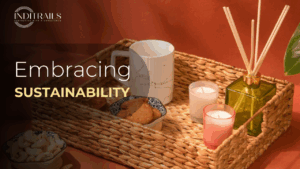In the heart of rural India, a quiet revolution is taking place. Women, often marginalized and overlooked, are finding their voices and independence through the ancient art of natural fibre weaving. From the lush fields of Assam to the arid landscapes of Rajasthan, women weavers are not only preserving traditional crafts but also weaving a brighter future for themselves and their communities. This is the story of their empowerment, one thread at a time.
The Rich Heritage of Natural Fibre Weaving in India
India has a long and storied history of natural fibre weaving. Materials like jute, bamboo, banana fibre, water hyacinth, and cotton have been used for centuries to create everything from baskets and mats to intricate textiles. These crafts are deeply rooted in cultural traditions, passed down through generations. However, as industrialization and modern lifestyles took hold, many of these traditional practices began to fade.
In recent years, there has been a resurgence of interest in natural fibre products, driven by global demand for sustainable and eco-friendly goods. This revival has opened up new opportunities for rural artisans, particularly women, who are now at the forefront of this movement.
The Challenges Faced by Women Weavers
Despite their skills, women weavers in India have historically faced numerous challenges. Many live in patriarchal societies where their contributions are undervalued, and their access to education, resources, and markets is limited. Economic dependence often leaves them vulnerable to exploitation and poverty. Additionally, the lack of infrastructure and support for traditional crafts has made it difficult for them to earn a sustainable income.
Empowerment Through Weaving: A Path to Independence
The resurgence of natural fibre weaving has become a powerful tool for women’s empowerment in India. Here’s how:
1. *Economic Independence*
By participating in weaving cooperatives and self-help groups, women are able to earn their own income. This financial independence allows them to contribute to their households, invest in their children’s education, and make decisions about their own lives. For many, it’s the first time they’ve had control over their finances.
2. *Skill Development and Entrepreneurship*
Organizations and NGOs are providing training programs to help women refine their weaving techniques and learn new skills, such as product design and marketing. Some women have even started their own small businesses, selling their products locally and internationally.
3. *Preservation of Cultural Heritage*
Women weavers are not just artisans; they are custodians of cultural heritage. By keeping traditional crafts alive, they are ensuring that their cultural identity is preserved for future generations. This sense of pride and purpose is deeply empowering.
4. *Community and Solidarity*
Weaving cooperatives and self-help groups provide a sense of community and solidarity. Women come together to share their experiences, support one another, and advocate for their rights. These networks have become a source of strength and resilience.
5. *Environmental Sustainability*
Natural fibre weaving is inherently sustainable, using renewable resources and eco-friendly processes. By promoting these practices, women weavers are contributing to environmental conservation and aligning with global sustainability goals.
Success Stories: Women Weaving Change
– *The Jute Weavers of West Bengal:* In the villages of West Bengal, women are reviving the art of jute weaving. With the support of NGOs, they are creating beautiful products like bags, rugs, and home decor, which are sold in domestic and international markets. This has not only improved their livelihoods but also elevated their status within their communities.
– *The Water hyacinth Artisans of Assam:* In Assam, women are using water hyacinth to create intricate baskets and furniture. These products are in high demand, and the women have formed cooperatives to ensure fair wages and better working conditions.
– *The Banana Fibre Weavers of Kerala:* In Kerala, women are turning banana fibre into elegant textiles and accessories. This innovative use of a byproduct of banana farming has created new economic opportunities and reduced waste.
How You Can Support Women Weavers
1. *Buy Handmade:* Choose natural fibre products made by women artisans. Your purchase directly supports their livelihoods and helps preserve traditional crafts.
2. *Spread Awareness:* Share the stories of these women weavers with your network. Awareness can drive demand and create more opportunities.
3. *Donate or Volunteer:* Many organizations work to empower women weavers. Consider donating or volunteering to support their initiatives.
Final Thoughts
The empowerment of women natural fibre weavers in India is a testament to the transformative power of traditional crafts. These women are not just weaving products; they are weaving dreams, dignity, and a better future for themselves and their families. By supporting their work, we can be part of this inspiring journey toward sustainability, equality, and cultural preservation.
Let’s celebrate these incredible women and the threads of change they are creating. Together, we can help them weave a brighter, more inclusive world.
—
Disclaimer: This blog is based on research and personal reflections. If you’d like to support women weavers, consider exploring organizations like Fabindia, Dastkar, or Inditrails .





